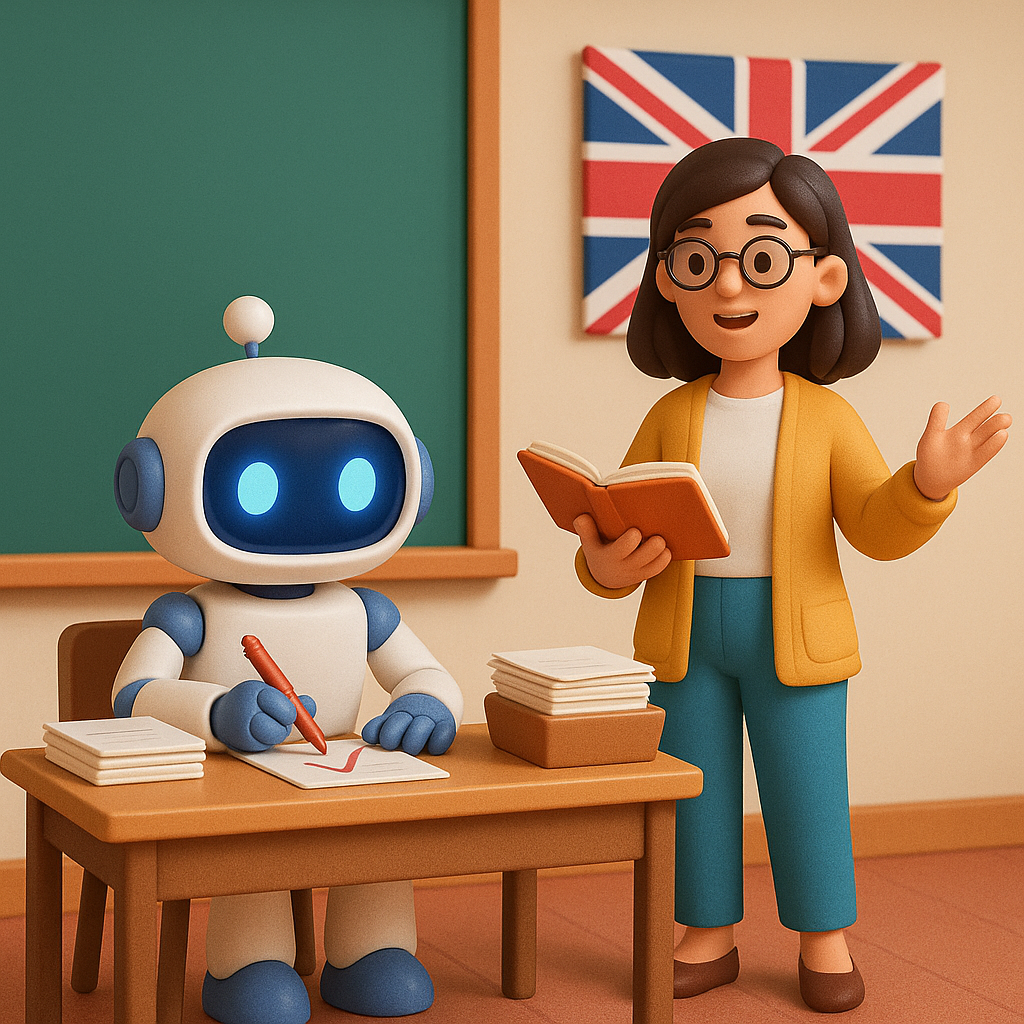Marking GCSE and A-Level work is one of the most time-consuming tasks teachers face – but it’s also essential to uphold the standards set by exam boards. With artificial intelligence (AI) emerging as a powerful assistant, the question is:
Can an AI marking tool reliably align with national standards and exam board expectations?
In this guide, we’ll show how AI-driven marking systems, like Marking.ai, work with official UK mark schemes to save time, ensure fairness, and keep teachers in control — all while meeting Ofqual’s quality expectations.
The UK Exam Landscape
In England, GCSEs and A-Levels are awarded by several boards, including:
-
(and smaller boards like WJEC Eduqas)
All boards are regulated by Ofqual to ensure national standards are upheld.
Why mark schemes matter
Mark schemes are the rule books for grading. For example, Pearson’s official guidance tells examiners:
“All learners must receive the same treatment – the first script must be marked in exactly the same way as the last.”
— Pearson Edexcel Marking Guidance
Two Types of Mark Schemes
-
Points-based schemes (Maths, Science)
-
Award 1 mark for each correct element.
-
Example: GCSE Maths problem = 1 mark for correct formula, 1 mark for substitution, 1 mark for correct answer.
-
-
Levels-based schemes (English, essays, open-ended tasks)
-
Answers grouped into levels/bands with descriptors.
-
Examiners start at Level 1 and “climb the ladder” until the best fit is found.
-
How AI Learns to Mark Like a UK Examiner
AI marking systems are trained on hundreds of real, human-marked scripts — using the same mark schemes teachers do.
Techniques include:
-
Rubric embedding: Programming the AI with official criteria.
-
Keyword/concept detection: Spotting required terms, methods, or concepts.
-
Level classification: Assigning bands for essays using qualitative descriptors (AQA method).
-
Example-response training: Learning from past-paper exemplars (RM Results proof of concept).
Example — Edexcel GCSE Maths:
-
Q: “Calculate acceleration given change in velocity and time” (3 marks).
-
AI awards:
- 1 mark for formula
- 1 mark for correct substitution
- 1 mark for correct final answer (with method marks if calculation slips).
Why AI Can Be More Consistent Than Humans
Humans get tired, biased, or inconsistent over time. AI doesn’t.
In a 2025 RM Results trial:
-
AI’s marks were only 0.22 marks off the average human score.
-
Human markers differed by 0.55 marks on average.
This means AI can be more consistent while still following the exact mark scheme.
At Marking.ai we did a study on how close AI is to real teachers marking GCSE English Language papers. Read it here.
Compliance with Ofqual & DfE Guidance
In June 2025, the Department for Education gave the green light for teachers to use AI to automate routine marking — as long as teachers remain in control.
Ofqual has confirmed:
“AI will not replace humans… but can support quality assurance of marking.”
Platforms like Marking.ai are built for this, with teachers able to review, edit, and approve all marks before they’re finalised.
Transparency: No “Black Box” Grading
Good AI marking tools work like a transparent co-marker:
-
Provide question-by-question scores.
-
Link each awarded mark to the relevant criteria in the mark scheme.
-
Highlight specific evidence in the student’s work.
This supports moderation and parent discussions — e.g. “2 marks for AO1 factual knowledge (highlighted here), 1 mark for AO3 evaluation (highlighted here)”.
See Pearson’s guidance on why this level of annotation is essential for moderation.
Supporting Moderation & Accountability
With AI:
-
All teachers start from the same, criteria-driven marks.
-
Moderators can easily review AI annotations for alignment.
-
School leaders have data reports to track patterns, spot gaps, and defend grades if challenged.
Consistency is maintained year-to-year, even if staff change.
Conclusion: Marking Smart, Not Just Faster
When aligned with AQA, Edexcel, and OCR standards, AI marking can:
-
Save teachers up to 11 hours a week (Marking.ai data)
-
Maintain fairness through consistent criteria application
-
Provide transparent, detailed feedback
The future of marking isn’t AI replacing teachers — it’s AI doing the heavy lifting so teachers can focus on insight, feedback, and learning.
Ready to see it in action? Book a 15 minute demo or try a free pilot set of scripts by signing up.


SUBMIT YOUR COMMENT